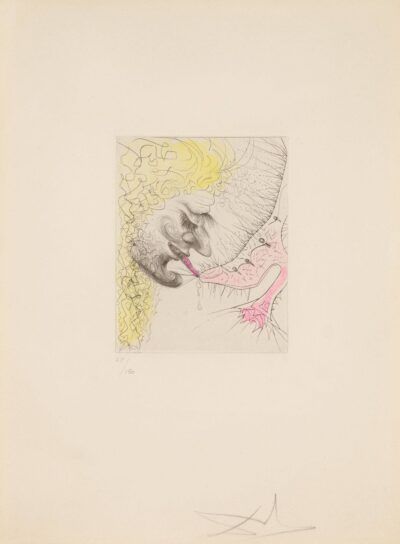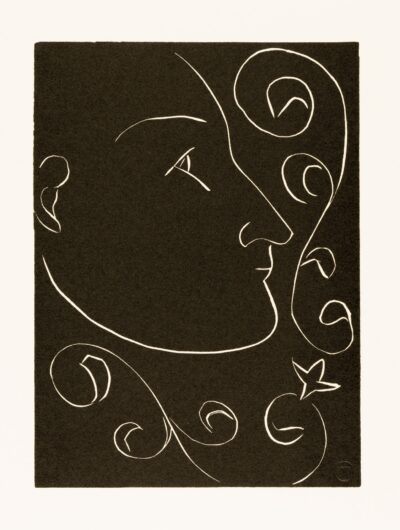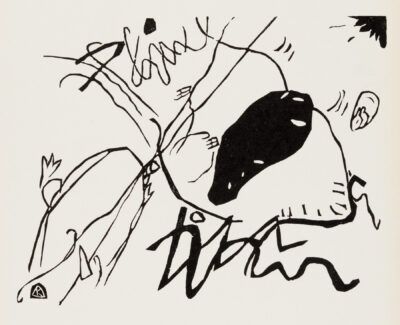Bogenschütze
Wassily Kandinsky
Bogenschütze
woodcut
1908-09
An original Wassily Kandinsky woodcut print.
(The Archer)
1908-09
Original woodcut printed in four colors (yellow, red, blue and black) from four blocks on wove paper.
Signed in the block with the artist’s monogram, the letter “K” in a triangle, left off-center.
A superb impression of Roethel’s second and final state, from the second edition, an edition of 1200, published by G. di San Lazarro, Chroniques du Jour, Paris, in the review XXeme Siècle, vol. I, No. 3, Paris, 1938 (the first edition, an edition of only 60 impressions, was issued in the almanac Der Blaue Reiter, 1912), one of six of the artist’s woodcuts (the other five having been originally published in the album Klänge in 1913) illustrating Kandinsky’s essay “Mes Gravures sur Bois” in this issue of XXeme Siècle.
Catalog: Roethel 79 ii/ii.
Size Image: 6 1/2 x 6 inches
Sheet Size: 12 ½ x 9 5/8 inches
Kandinsky’s art is one of the great foundations of 20th century abstract painting. At the time of the formation of the “Blue Rider” group in Munich in 1911 Kandinsky’s two friends, Auguste Macke and Franz Marc, emphasized that the group’s conception of form was based on “mystical and inward construction” and the depiction of “mysterious forces”. As such, there were strong links with Symbolism and with late 19th century French painting. However, the great advance made in Kandinsky’s work of this period was that the elements of pattern and color, instead of being subsidiary or equal to the visual content, were increasingly dominant, to the point at which they became the whole picture itself. In 1912 Kandinsky wrote a treatise, “The Spiritual in Art”, in which he advocates for the first time the creation of an “abstract” picture – that is an evocation of emotion alone without any pictorial content.
At the moment of the Blaue Reiter Kandinsky’s imagery was still rooted in the representational, but with the pattern of colors and shapes becoming increasingly the main element in the composition. In 1901, when he first broke away from the Munich establishment and formed the association Phalanx, he began to use folk art as one of his principal themes. It was these images, with their traditional implications and complete lack of obscuring sophistication, which allowed him to liberate his color and use of form. In “Bogenschütze” there are the traditional elements of folk illustration, the bowman, the castle, the forest, but superimposed on them is the expression of emotion through abstract shape and color.





